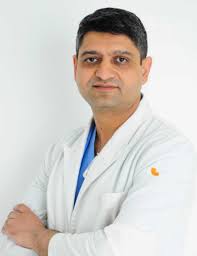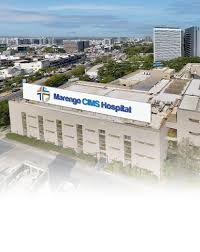Cancer
Whipples Procedure
Whipples Procedure
GetWellGo helps international patients access world-class Whipple’s Procedure in India with expert care, cost savings, and seamless support.
Whipple Procedure for Pancreatic Cancer
Whipple procedure or pancreaticoduodenectomy is a complicated surgery performed to cure head pancreatic cancer (the larger part of the pancreas that is close to the duodenum). It may also be applied in some benign or precancerous pancreatic diseases and other cancers around the pancreas (such as bile duct or duodenal cancer).
What Is a Whipple Procedure?
In Whipple surgery, the following is removed:
- The pancreas is a gland composed of two parts, the head of which (where the majority of pancreatic cancers arise) is referred to as the head of the pancreas.
- The duodenum (proximal part of the small intestine)
- The gallbladder
- Part of the bile duct
- In some cases, some of the stomach and the lymph nodes that are near it.
Once the organs have been removed, the surgeon reconnects the remaining organs so that the digestive process can proceed - this involves the reconnecting of the stomach, pancreas and bile duct to the small intestine.
Types of Whipple Procedures
Classic Whipple (Standard Pancreaticoduodenectomy)
-
Removes away a fragment of the stomach and its other organs.
Pylorus-Preserving Whipple
- Holds the stomach together keeping the pylorus (valve to passage food into the small intestine).
- Helps have a more normal digestion after surgery.
Total Pancreatectomy (in a few instances)
-
Removes the whole pancreas which causes insulin dependence (diabetes) and lifelong enzyme replacement therapy.
Indications
Whipple procedure is mainly applied in case of:
- Pancreatic cancer of the head (adenocarcinoma).
- Ampullary cancer
- Distal bile duct cancer
- Duodenal cancer
- Pancreatic neuroendocrine tumors (in a few cases)
- Chronic pancreatitis (as a last resort, in case of failure of other treatment methods)
Preoperative Evaluation
Preoperative patients experience:
- CT scan / MRI / PET scan - to determine the location and dissemination of the tumor.
- Endoscopic ultrasound (EUS) - to assess the size of the tumor, and involvement of the vascularity.
- Biopsy – to confirm diagnosis
- Blood tests- liver functionality test and tumor markers such as CA 19-9.
- In case the tumor has invaded the main blood vessels or other remotely located organs, the Whipple procedure is not carried out.
Surgical Procedures
- Duration: 6–10 hours
- Anaesthesia: General
- Hospital Stay: 7–14 days (varies)
Steps:
-
Excision of affected organs (head of the pancreas, duodenum, etc.).
Reconstruction — connecting:
- Small intestine to the pancreas (pancreaticojejunostomy)
- Small intestinal (hepaticojejunostomy) bile duct.
- Small intestine to the stomach (gastrojejunostomy)
- Insertion of drains to avoid fluid buildup.
Postoperative Recovery
- ICU observation first 121 days.
- Staged reintroduction of oral food in a few days.
- Pain management through the use of epidural or IV drugs.
- Pancreatic enzyme supplements can be required to digest.
- Blood sugar (transient or persistent risk of diabetes)
Factors Affecting Cost of Whipple procedure in India
Determinants of the cost of Whipple procedure (pancreaticoduodenectomy) in India:
Surgical type -open/ laparoscopic/ robotic
-
Robot and minimally-invasive systems demand costly equipment, special consumables and increase OT-time or specialised personnel; many hospitals place an extra charge of robot use or robot consumable charge.
Type and reputation of hospital
-
The cost of OR time, ICU, surgeon/anaesthetist fees and room at premium private hospitals in metros is higher; the government hospitals are generally cheaper, but there is variation in their availability/wait times.
Surgical team and surgeon charges / experience of surgeon
-
Multidisciplinary teams (HPB surgeons, specialised anaesthesia, trained ICU staff) with high volume pancreatic surgeons may attract higher professional charges, and may have lower complication rates, which may in turn lower overall cost across the entire admission.
Hospitalization and ICU utilization
-
The ICU and the ward charges are money-consuming every day; complications (pancreatic fistula, infection, re- operation) extend the duration of stay and add interventions and imaging.
Re-intervention and complications
-
Abscess, bleeding, fistula, drains, antibiotics, re-operation (possibly), radiologic drainage, and extended stay are complications, and this is one of the biggest unknown cost drivers.
Pre-op investigation, staging and optimisation
-
CT/MRI/PET, endoscopic ultrasound, biopsy, cardiac/respiratory clearance and optimisation of comorbidities are billed individually pre-admission.
Consumables, grafts, drains and disposables
-
There are staplers, drain, biologic sealants or specialised anastomosis devices, and robotic instruments (disposable arms/ports), which are billed separately. Another additional expense is robotic consumables.
Room type / accommodation options
-
Single room vs shared ward vs suite — large variation in price per-day.
City / state place of residence
-
Big cities (Delhi, Mumbai, Bangalore, Chennai, Hyderabad) are more expensive than smaller cities because they require more operation and specialists.
Follow-up (chemotherapy / radiation) and adjuvant therapy
-
A significant extra cost and impacting the cost of overall treatment is oncologic post-surgical (adjuvant chemo, such as FOLFIRINOX or gemcitabine regimens) treatment, typically billed after surgical care.
Patient (age, comorbidities, nutrition) factors
-
More monitoring, optimisation, potential prehab, and more likely to experience complications are required in sicker patients, increasing cost.
Whipple procedure complications and risks
- Pancreatic Fistula (Pancreatic Leak): Leakage of pancreatic digestive fluid at the surgical contact (pancreaticojejunostomy).
- Delayed Gastric Emptying (DGE): Food is emptied into the small intestine slowly in the stomach post-surgical.
- Intra-abdominal Infection or Abscess: Localized accumulation of pus as a result of leakage or contamination.
- Bleeding (Hemorrhage): Bloody vomiting during or after surgery due to vessels in the area close to the pancreas.
- Anastomotic Leak (Bile or Intestinal Leak): Leakage of the bile duct or intestinal connections.
- Intra-abdominal Fluid Collection: The presence of sterile or infected fluid in the area of operation.
- Wound Infection or Dehiscence
- Pulmonary Complications
- Cardiac Complications
- Venous Thromboembolism (VTE): Thrombosis or pulmonary embolism of the deep vein.
- Nutritional and Metabolic Problems
- Anastomotic Structure (Narrowing): This is a blockage of the bile or the pancreatic duct due to the formation of scar tissue.
Minimally invasive Whipple surgery in India
Minimally Invasive Whipple Surgery (MIWS) is a laparoscopic or robotically-assisted procedure to perform the pancreaticoduodenectomy (Whipple procedure).
Surgeons use 5-6 small keyhole incisions to insert a camera and instruments to remove the diseased pancreatic head and adjacent structures rather than the large abdominal incision used in open surgery.
Purpose of the Surgery
Used to treat:
- Pancreatic head cancer
- Ampullary carcinoma
- Distal bile duct cancer
- Duodenal tumors
- Pancreatic tumors that are selected as cystic or neuroendocrine.
It is aimed at eliminating the tumor with the use of safe reconstruction of the digestive tract, which is the same as open Whipple.
Techniques
Whipple Procedure Laparoscopic
- It was played with long instruments and a high-definition camera.
- Surgeon works manually with the help of the magnified image on the monitor.
- Reconstruction (connection of the pancreas, bile duct, and stomach) is a complicated challenge.
Robotic Whipple Procedure
-
Surgery, accomplished by a robotic system of surgery (e.g. da Vinci Xi).
The surgeon is seated at a console that operates robots arms which provide:
- 3D visualization
- Tremor filtration
- Increased instrument handiness.
Enables more detailed dissection and sutureing - this is useful especially in the fragile pancreatic anastomosis.
Robotic Whipple surgery cost and benefits
The most important additions to explain robotic surgery cost comprise:
- Cost per procedure/ robot instrument/arm consumables
- Additional operating room time (starter)
- Professional employee training and access.
- Repair expenses of robotic system inbuilt in hospital bills.
Benefits (Potential Advantages) of Robotic Whipple Surgery:
- Reduced blood loss: The robotic surgery has a better visualization system, a more accurate dissection. Numerous reports present reduced intraoperative blood loss than open surgery.
- Smaller cuts / reduced trauma: result in reduced postoperative pain and reduced wound healing.
- More rapid recovery / less hospitalization: Patients can usually get discharged earlier, resume oral nutrition earlier, less ileus, etc.
- Less postoperative pain / morbidity: Less infection (wound infection), less respiratory complication (due to less pain to respiratory functioning) etc.
- Similar oncologic results: Lymph node yields Margin clearance (R0 resection), lymph node yields frequently similar or not inferior with experienced robotic programs. Systematic review implies that robotic PD is safe and it is not inferior to open PD.
- Therapeutic index: A single study report has determined that robotic-PD (pancreaticoduodenectomy) has a higher index of therapeutic index compared to open PD, which argues perhaps in favor of a superior benefit vs risk in patient selection.
Best hospitals for Whipple surgery in India
- Artemis Hospital, Gurgaon
- Medanta-The Medicity, Gurgaon
- Fortis Memorial Research Institute, Gurgaon
- Max Hospital, Saket
Conclusion
The Robotic Whipple surgery (robotic pancreaticoduodenectomy) is a major innovation in the treatment of pancreatic cancer - the curative potential of standard Whipple surgery combined with the accuracy and the recovery of minimally invasive technology. It is more expensive than open or laparoscopic procedures, but the robotic system has some important benefits: it has small incisions, causes less blood loss, results in less postoperative pain, quicker recovery time, and an equal number of cancer clearance results in the hands of experienced surgeons in high volume centers. Nonetheless, it is a resource-intensive and technically challenging procedure, which is most efficiently applied to the patients carefully chosen and in the hospitals that have experienced hepatopancreatobiliary (HPB) surgical teams.
Whipples procedure treatment in India GetWellGo
GetWellGo is regarded as a leading supplier of healthcare services. We help our foreign clients choose the best treatment locations that suit their needs both financially and medically.
We offer:
- Complete transparency
- Fair costs.
- 24 hour availability.
- Medical E-visas
- Online consultation from recognized Indian experts.
- Assistance in selecting India's top hospitals for Whipples Procedure treatment.
- Expert gastroenterologist/gastro-oncologist with a strong track record of success
- Assistance during and after the course of treatment.
- Language Support
- Travel and Accommodation Services
- Case manager assigned to every patient to provide seamless support in and out of the hospital like appointment booking
- Local SIM Cards
- Currency Exchange
- Arranging Patient’s local food
FAQ
1. What is Robotic Whipple surgery?
- Robotic Whipple surgery or robotic pancreaticoduodenectomy is a minimally invasive form of the standard Whipple procedure as it is conducted under robotic surgery. It enables the surgeon to work with increased precision, flexibility and 3D visualization.
2. How does it differ from traditional Whipple surgery?
- Through robotic Whipple surgery, small keyhole incisions are used unlike open surgery where a large abdominal incision is used. This result into reduced pain, reduced blood loss, quicker recovery and reduced scars.
3. Who can be considered a candidate of robotic Whipple surgery?
- Best candidates are patients of pancreatic tumors of early stages who have not metastasized or those that are in the duodenum or bile duct. It is eligible based on the size of tumor, location and well-being.
4. How long does recovery take?
- The majority of the patients take 3 to 4 weeks to resume normal functions, which is 6 to 8 weeks in the case of open surgery. It can take a few months before one is fully recovered.
5. How successful is robotic Whipple surgery?
- Robotic Whipple surgery in experienced hands has a success rate of 85-95 and the long-term survival results of robotic Whipple surgery are similar to those of open surgery, but there are superior recovery results in the short-term.
TREATMENT-RELATED QUESTIONS
GetWellGo will provide you end-to-end guidance and assistance and that will include finding relevant and the best doctors for you in India.
A relationship manager from GetWellGo will be assigned to you who will prepare your case, share with multiple doctors and hospitals and get back to you with a treatment plan, cost of treatment and other useful information. The relationship manager will take care of all details related to your visit and successful return & recovery.
Yes, if you wish GetWellGo can assist you in getting your appointments fixed with multiple doctors and hospitals, which will assist you in getting the second opinion and will help you in cost comparison as well.
Yes, our professional medical team will help you in getting the estimated cost for the treatment. The cost as you may be aware depends on the medical condition, the choice of treatment, the type of room opted for etc. All your medical history and essential treatment details would be analyzed by the team of experts in the hospitals. They will also provide you with the various types of rooms/accommodation packages available and you have to make the selection. Charges are likely to vary by the type of room you take.
You have to check with your health insurance provider for the details.
The price that you get from GetWellGo is directly from the hospital, it is also discounted and lowest possible in most cases. We help you in getting the best price possible.
No, we don't charge patients for any service or convenience fee. All healthcare services GetWellGo provide are free of cost.
Top Doctors for Cancer
Top Hospitals for Cancer
Contact Us Now!
Fill the form below to get in touch with our experts.







